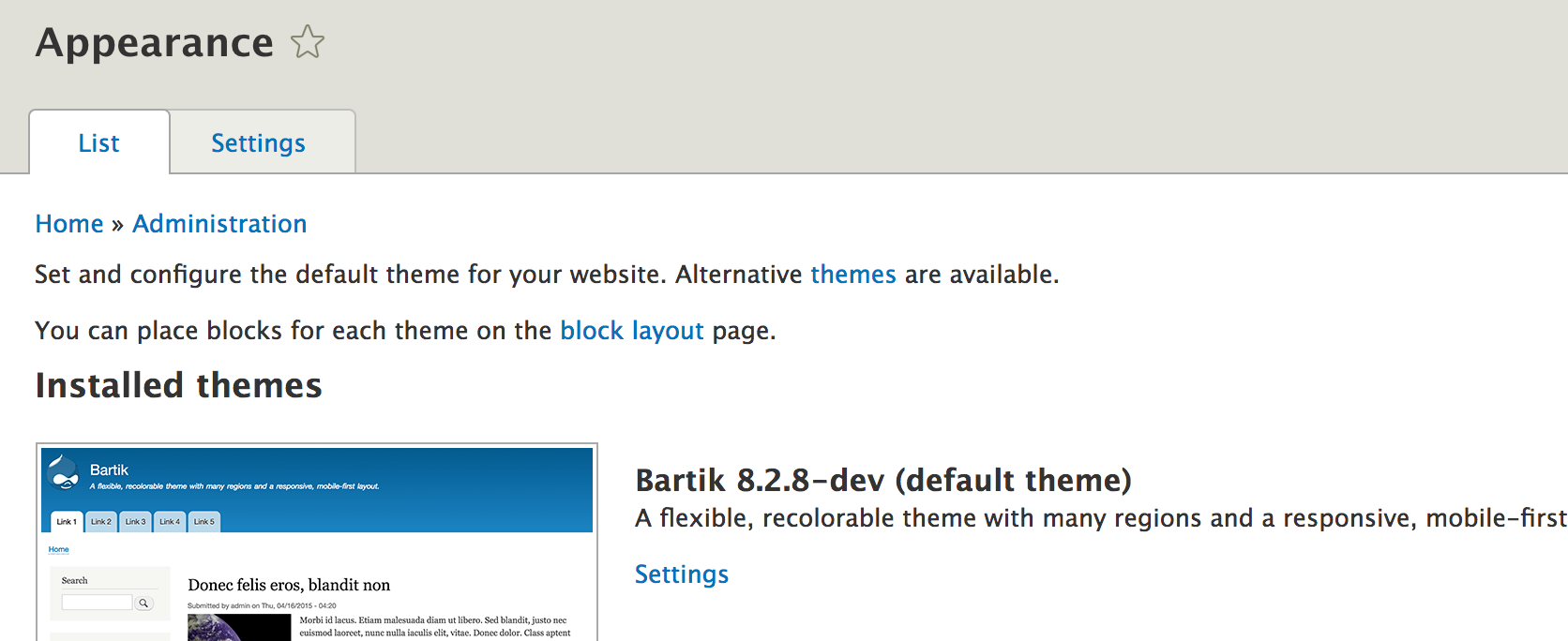The most obvious part of Drupal's theming system is the Appearance admin page found at admin/appearance, which lists all the themes installed on your website. The page is shown in the following screenshot:

When you choose a theme from the Appearance page, you are applying a specific graphic design to your website's data and functionality. However, the applied theme is in reality only a small part of the entire theming layer.
This book mostly focuses on building modules that encapsulate chunks of a functionality. However, since we're ultimately building a web application, everything outputted by our functionality will need to be marked up with HTML. In Drupal, this process of wrapping data in HTML and CSS is called theming.
In this chapter, we will discuss how our module should integrate with the theme layer. We will talk about the architecture of the system...

































































